What can’t you do with aloe vera? I mean, seriously? This plant has medicinal superpowers, but you’ll need the best soil for aloe vera to be able to take advantage of them!
Once a desert plant, always a desert plant, as they say – aloe vera likes dry, well-draining soil, with regular watering every week or two. Aloe is super easy to overwater, but be sure not to underwater it either. The right soil will retain just enough moisture to nourish your aloe around the clock. In this article, we’ll tell you all about the best soil for aloe vera and where to find it.
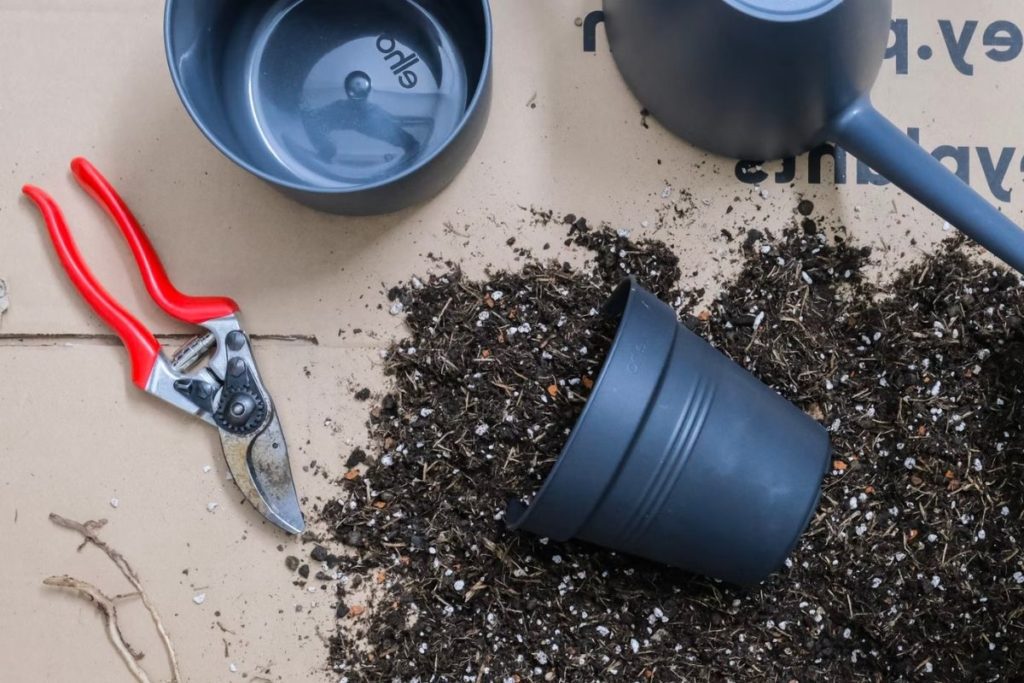
what aloe vera plants need in potting soil
Aloe vera originate on the Arabian Peninsula and today thrive in a range of arid, tropical regions, along with most toasty apartments! This succulent is well-adapted to warm, bright, and dry conditions. The thick, spiked leaves that we prize aloe for hold moisture for the plant to drink between rainy days. Alsoe also has very shallow, fibrous roots that like to be dry, but not dehydrated (yep, there’s a difference). Depending on indoor conditions and the plant’s size, aloe typically appreciates being watered once every week or two. Potting soil, the right placement in a room, and a consistent watering schedule will keep your aloe well-hydrated and groovy 😎
This is what you should look for in the perfect soil pairing for your aloe plant:
- good drainage. Any soil that you plant an aloe vera in must drain well, and be in a pot with drainage holes. This will prevent water from sitting in the pot, which can lead to root rot or fungal growth. An aloe plant’s shallow roots can be easily damaged by excess water since they are used to drying out for many days at a time.
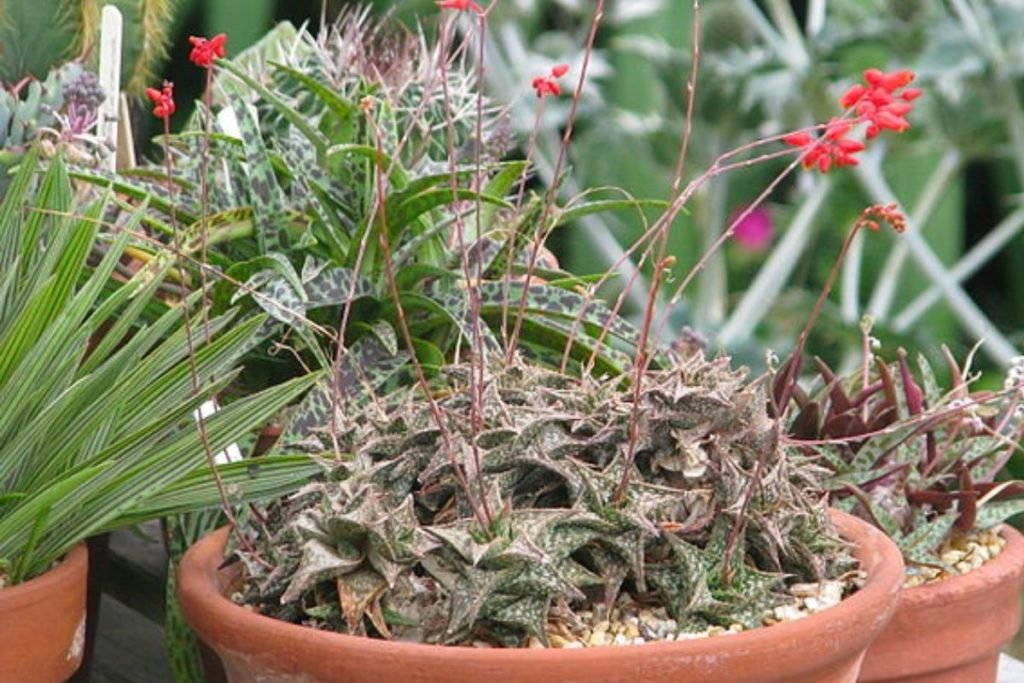
- not too much space. Larger pots hold more water than smaller ones, and although the aloe gets top-heavy, it doesn’t need a very deep pot (just a sturdy one). The short roots like to stay in the upper couple of inches of the dry topsoil, and the pot should dry out completely in a week or two. The size of the pot will vary depending on the size of the plant.
- aeration. Aloe plants like their soil to be well-drained and dry since, in nature, they stay close to the surface level of the topsoil. You can give the roots extra oxygen by aerating the soil every once in a while, poking into the soil with a thin stick. This will provide extra oxygen to the roots while also helping the water drain by uncompacting the soil, which settles over time as you water the plant.
- light fertilizer. Since these plants are native to a desert environment with little soil, it doesn’t need to be fertilized as much as the average plant. Used to little bioactivity in the ground, an aloe plant is happy with a little fertilizer once or twice a year during its growing season over spring and summer.
- Neutral to slightly alkaline pH. The low-quantity and dry soil in the aloe vera’s natural habitat allows it to thrive in neutral to slightly alkaline soil (pH of 7-8.5). Checking your plant’s soil profile for nutrient and pH level will help you know if your plant is comfortable in its growing medium.
signs that your aloe vera is in the wrong soil
Plants speak through their leaves. Like mood rings, they change color when our plants are happy, sad, depleted, anxious, overwhelmed, overjoyed…. LOL, you get the idea 😂 Your aloe will let you know it’s in the wrong soil with its spiky foliage. The leaf blades of your aloe plant may droop, brown at the tips, turn yellow, or dry and curl inwards. Diagnosing the cause of yellowing leaves or any other sign of distress in your aloe plant can take some experience and skill, but you can be sure that changing its soil will only help. Soil that’s too dry isn’t as damaging as soil that’s too wet for this plant, but both can cause problems long-term. Here are five signs your aloe needs a change of potting soil scenery:
- drooping leaves. When your aloe vera leaves are dropping, it may either be a sign of dehydration, or the beginning of a root infection or rot. Check the soil: if it’s too dry, the plant may not be getting water frequently enough, or the soil may not be holding on to moisture long enough. If the soil is too wet, it may be stressing the plant, starting to rot the root, or hosting a fungus that is competing for space and resources.
- brown leaf tips. Brown tips of an aloe are usually a sign of dryness, either from underwatering or too-quickly draining soil. The tips of the leaves are the last to get moisture, so they will be the first to stop receiving it when the level is low. However, if the soil is too wet, it may be a sign the roots are being stressed or damaged and are unable to absorb moisture.
- yellowing leaves. Aloe leaves that are turning yellow are usually a sign of root rot. When the plant can’t absorb moisture and nutrients from the soil, it isn’t able to produce chlorophyll. Yellowing may, but doesn’t always, accompany dropping leaves as a sign of overwatering.
- dry, curling leaves. If the full leaves begin to dry, shrink, and curl, it is a sure sign of dehydration. An underwatered aloe, or one that is in too-dry soil, will patiently wait for more moisture, and shrinking and curling its leaves are its last attempt to use the moisture stores in the leaves to continue to wait, and will eventually dry out completely if not watered.
- fungal infection. A fungal infection in the damp soil of an aloe plant can quickly damage the small, shallow root system that allows it to thrive in much drier conditions. The fungus will compete for space and resources in the soil, and will infect and eat away at the plant’s roots. A fungal growth in the soil may also lead to fungus gnats, which reproduce in the soil and survive on the fungus.

how to make the best soil for aloe vera plants
You can easily mix up a batch of homemade potting soil for aloe with a couple of ingredients:
You will need:
- Regular potting soil
- Coarse material growing medium (pine bark, orchid bark, sand, coco coir, perlite, sand, dried Sphagnum moss, Leca)
Planting aloe vera in a 50/50 mixture of regular potting soil and coarse materials will give your aloe’s roots a well-draining environment that also will retain some moisture between waterings. Allow this soil mixture to dry out completely before the next watering.
store-bought aloe vera potting mix
If you don’t want to make your own potting soil mix, there are many pre-mixed potting soils out there for succulents that will provide the right conditions for your plant to thrive. Here are a couple of our favorites:
- Aloe Vera Soil Blend, Hand Blended Aloe Vera and Succulent Soil Mix – The ingredients for this aloe vera soil blend include peat moss, perlite, and sand, all of which help with drainage. The mix also contains lime to keep the soil on the alkaline side, which the aloe prefers.
- Miracle-Gro Succulent Potting Mix – This soil contains coarse forest materials and sphagnum moss to help drain water from the soil. The formula helps retain moisture as well, so your aloe stays well-enough hydrated to last over the week or two between waterings.
common problems / FAQs
When first-time aloe parents have to change their plant’s pot for the first time, it can be a daunting prospect. No one wants to damage their plant, but it’s actually pretty easy to transition an aloe between pots. Their roots are shallow, but hearty, and the soil should be loose and not hold on too tightly when you try to pull it out of the origin pot.
when to repot aloe vera?
Your aloe vera will get bigger over time, and so it will outgrow its pot and need to be transplanted. Increasing the pot size just an inch or two up, make sure the new container has drainage holes and is filled with well-draining, slightly moistened soil. Depending on the age of the aloe, you will only need to do this every few years, and less frequently the older it gets.
how to repot an aloe vera plant?
Wear gardening gloves to move your aloe since the leaves are sharp, and you’ll need to hold the plant at the base. Allow the soil to dry all the way out so it will easily fall from the roots after removal. Lift the aloe from the soil gently from the base, and shake the soil free from the roots. Place the aloe in the new pot and cover the roots with soil.
Set the aloe in indirect light, and allow it to stretch its roots in its new home. It may show some signs of shock as it redirects energy supplies to spreading its roots, especially droopy leaves. This is normal and they will firm up as the plant installs itself.
can I use regular potting soil for an aloe vera?
Most plants like the moisture storage that regular potting soil retains, but this is too much moisture for aloe vera, which won’t do well in it. The best soil for aloe vera has lots of coarse, solid materials in the soil that will help drain water to the bottom and out of the container.
more about soil
- How to Use Leca for Plants: Step-by-Step Guide with Pictures
- Best Soil For Snake Plants That Will Keep Them Happy
- The Best pH Meter For Soil
- The Best Soil For Indoor Plants (Every Kind Of Plant)
- The Best LECA Balls (Expanded Clay Pebbles) For Your Plants
- 8 Best Soil Moisture Meter Options For Indoor Plants
- Best Soil For Monstera Plants (DIY Recipe + Store-Bought Options)
- How to Make Potting Soil for Indoor Plants, Plus My Secret Ingredient
- Is that mold on plant soil? Here’s what you need to know.
- How to use a moss pole for plants: An expert explains

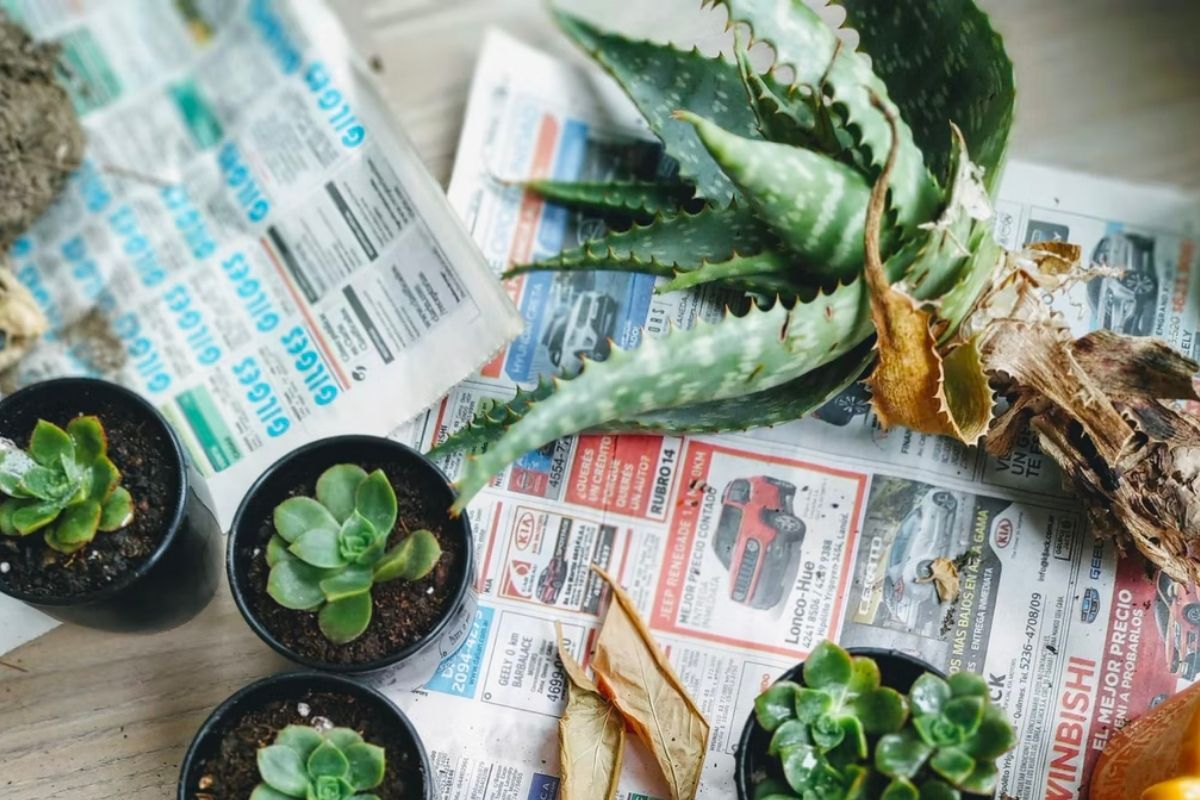
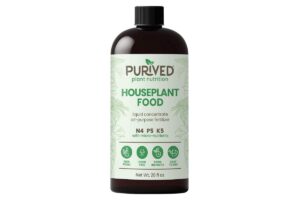
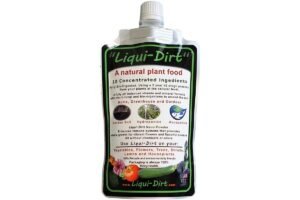
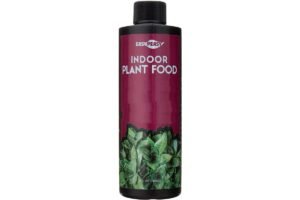
Thanks for clearing up how often to water my aloe plants as well as what soil to use. I do have them in soil for succulents, but wasn’t sure about how often to water, but do know that too much water is not good.
That’s great to hear, Shawn! Hope the soil is working out for them 🙂
I am a 1st time aloe plant owner, and this is a great help. Thank you!
Happy to hear it, Tina! Feel free to shoot us an email if you have any questions 🙂